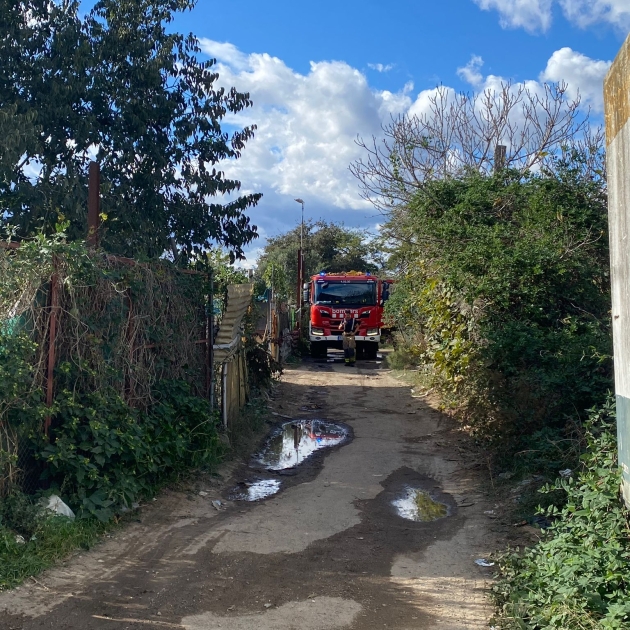The vegetation-clad flats beside the Besòs river, on the northern outskirts of Barcelona have once again been the setting this Friday morning for a fire which, fortunately, was controlled in time and which, despite being driven by a strong wind, did not cause any personal injuries. In this area beside the river, in the municipality of Montcada i Reixac and near the La Roca highway, there is an illegal shantytown where numerous families live. It is the location where, in January 2022, a couple died from smoke intoxication, caused by the coal-burner they were using to warm up the shack that was their home. This time it was a poorly extinguished bonfire, it seems, that set fire to vegetation and reached the shacks where around a hundred people are living in poor conditions.
The fire started in the early hours of the morning, and made it necessary to evacuate all those who were squatting in the improvised housing of the area: there were several families, some who had been forced out of Barcelona and had ended up in this informal settlement a few kilometres outside the Catalan capital. It has no running water or plumbing and electricity is precarious. Until two o'clock in the afternoon the residents who live here were unable to re-enter their neighbourhood of unpaved alleyways - that today were full of puddles of water, due to the work of the firefighters - where the homes are enclosures made from bed frames, pallets, and padlocks.
Then, accompanied by the fire teams, police and SEM medical ambulance staff, they were able to go back in to check the condition of the shacks that they live in. There is no official or up-to-date record of how many people live there, nor what buildings they live in. The firefighters first had to inspect all the shanty huts to confirm that there was no one left and then, accompanied by the residents, returned to see if they were in good enough state to re-enter. According to the initial reports, although some huts were burned by the fire, none of these were used as housing and thus none of the families will need to be relocated.
These families have been living in these shacks next to the Besòs river for almost eight years, as one of the women residents explained to the head of the fire fighter team. To him, and to everyone, this fire, which could have been a tragedy, has been a reminder that there are still spaces in Catalonia where people live in shacks as if it were a different era.
Montcada i Reixac asks Catalan government for help
The municipal council and the Catalan and Spanish governments created a commission after the tragedy a year ago, but today, everything remains the same. The mayor of Montcada i Reixac, Bartolomé Egea, warned that the problem of shanty towns is "serious" and stated that there are other cases of improvised housing in the city similar to those on the flats beside the Besòs river. "We ask the Catalan government to reactivate that commission with the different parties involved to address this problem as soon as possible", expressed Egea, who declared that it is "impossible" for the council to solve this situation by itself.
"Just emptying and cleaning up the area of the camp would cost two or three million euros," he said. Likewise, he explained that a year ago a study concluded that 142 people registered as Montcada and Reixac residents live in this space. However, he warned that there are also people who are not registered there or who are officially residents of neighbouring munipalities such as Badalona or Sant Adrià. Of these 142 people, 25 or 30 are minors. However, all the authorities maintain that this figure is no more than an approximation, taking into account that many people come and go and that there are some places that the municipal professionals have not been able to assess.
